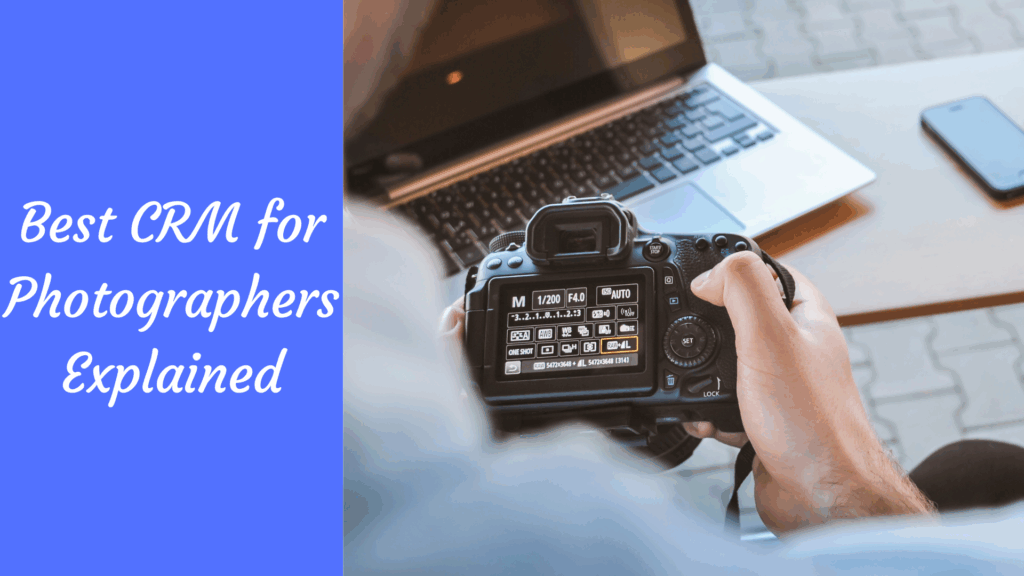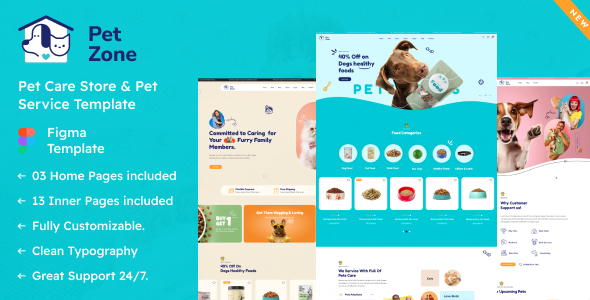
Running a photography business, especially when you’re just starting, can feel like juggling a thousand things at once. From capturing stunning images to editing them, from marketing your services to managing your clients, the workload is immense. That’s where a Customer Relationship Management (CRM) system comes in. Think of it as your digital right-hand person, helping you organize, automate, and personalize every interaction with your clients. But with so many CRM options available, choosing the right one can be overwhelming. This article dives deep into the best CRMs specifically tailored for small photographers, helping you find the perfect fit to boost your productivity, enhance client relationships, and ultimately, grow your business.
Why a CRM is a Game Changer for Photographers
Before we jump into the specific CRM recommendations, let’s explore why they’re essential for photographers. In the pre-digital age, photographers relied on stacks of paper, handwritten notes, and a memory that could only stretch so far. Now, a CRM does all the heavy lifting, allowing you to focus on what you do best: creating beautiful photographs.
Organized Client Data
Imagine having all your client information – contact details, shoot history, preferences, payment records – readily available in one centralized location. No more frantic searching through emails, spreadsheets, or notebooks. A CRM provides a 360-degree view of each client, making it easy to personalize your interactions and provide exceptional service.
Streamlined Workflow
CRMs automate many of the tedious, repetitive tasks that eat into your time. Think automated email responses, appointment scheduling, and payment reminders. This frees you from administrative burdens, allowing you to dedicate more time to photography and client interactions.
Improved Client Communication
Consistent and timely communication is key to building strong client relationships. A CRM allows you to schedule follow-up emails, send personalized greetings, and keep clients informed about their projects. This level of engagement fosters trust and loyalty, leading to repeat business and positive word-of-mouth referrals.
Enhanced Marketing Efforts
CRMs often include tools for managing marketing campaigns, tracking leads, and analyzing customer behavior. This data-driven approach enables you to target your marketing efforts more effectively, reaching the right audience with the right message. You can track the success of your marketing campaigns, allowing you to make informed decisions about future strategies.
Increased Revenue
By streamlining your business processes, improving client relationships, and enhancing your marketing efforts, a CRM ultimately contributes to increased revenue. Happy clients are more likely to book your services again and recommend you to others. Furthermore, efficient workflows allow you to take on more projects, boosting your earning potential.
Top CRM Systems for Small Photographers
Now, let’s explore some of the best CRM options specifically designed or well-suited for small photography businesses. We’ll consider features, pricing, ease of use, and overall suitability for the unique needs of photographers.
1. Dubsado: The All-in-One Powerhouse
Dubsado is a favorite among photographers for a reason. It’s more than just a CRM; it’s a complete business management system that handles everything from lead capture to invoicing. Dubsado offers a comprehensive suite of tools, including:
- Lead Capture Forms: Capture leads directly from your website with customizable forms.
- Workflow Automation: Automate repetitive tasks like sending contracts, invoices, and follow-up emails.
- Contracts and Proposals: Create and manage contracts and proposals with ease.
- Invoicing and Payments: Send professional invoices and accept online payments.
- Scheduling: Integrate with your calendar for seamless appointment scheduling.
- Client Portal: Provide clients with a dedicated portal to access their documents and communicate with you.
- Time Tracking: Track your time spent on projects for accurate billing.
Pros:
- Highly customizable and adaptable to your specific workflow.
- Excellent automation capabilities.
- Comprehensive features for managing the entire client lifecycle.
- Client portal enhances communication and professionalism.
Cons:
- Can have a steeper learning curve due to its extensive features.
- Pricing can be higher than some other options, but the value is often worth it.
Pricing: Dubsado offers a variety of pricing plans depending on your needs. Check their website for current pricing.
Who it’s best for: Photographers who want a fully integrated system to manage their entire business, from lead capture to final delivery. It’s ideal for those who want to automate as much as possible and provide a professional client experience.
2. HoneyBook: The Client Experience Champion
HoneyBook focuses heavily on the client experience, providing a user-friendly platform that makes it easy for clients to book your services, communicate with you, and manage their projects. Key features include:
- Online Booking: Allow clients to book your services directly through your website.
- Contracts and Proposals: Create and send professional contracts and proposals.
- Invoicing and Payments: Send invoices and accept online payments.
- Client Portal: A clean and intuitive client portal for easy communication and file sharing.
- Project Management: Track project progress and manage tasks.
- Workflow Automation: Automate tasks like sending questionnaires and follow-up emails.
Pros:
- User-friendly interface, making it easy for both you and your clients to use.
- Focus on client experience, providing a professional and seamless booking process.
- Excellent customer support.
- Good integration options with other tools.
Cons:
- Less customizable than Dubsado in terms of workflows.
- Can be more expensive than some other options.
Pricing: HoneyBook offers a variety of pricing plans. Check their website for current pricing.
Who it’s best for: Photographers who prioritize a smooth and professional client experience. It’s a great choice for those who want an easy-to-use platform that simplifies the booking and project management process.
3. 17hats: The Budget-Friendly Option
17hats offers a comprehensive suite of features at a more affordable price point, making it an excellent option for photographers on a budget. Key features include:
- Lead Capture Forms: Capture leads directly from your website.
- Workflow Automation: Automate tasks like sending contracts, invoices, and follow-up emails.
- Contracts and Proposals: Create and manage contracts and proposals.
- Invoicing and Payments: Send invoices and accept online payments.
- Scheduling: Integrate with your calendar for appointment scheduling.
- Project Management: Track project progress and manage tasks.
- Time Tracking: Track time spent on projects for accurate billing.
Pros:
- Affordable pricing, making it accessible to small businesses.
- Comprehensive features for managing the entire client lifecycle.
- Easy-to-use interface.
- Good customer support.
Cons:
- Less customization options compared to Dubsado.
- The interface may feel a bit outdated compared to HoneyBook.
Pricing: 17hats offers various pricing plans. Check their website for current pricing.
Who it’s best for: Photographers who are looking for a feature-rich CRM at an affordable price. It’s a great option for those who are just starting out or have a limited budget.
4. Pixifi: Photography-Specific CRM
Pixifi is a CRM specifically designed for photographers, offering features tailored to the unique needs of the industry. Key features include:
- Photography-Specific Templates: Pre-built templates for contracts, invoices, and questionnaires.
- Shoot Management: Manage all aspects of your shoots, from booking to delivery.
- Image Storage and Delivery: Integrate with image storage and delivery platforms.
- Workflow Automation: Automate tasks like sending questionnaires, contracts, and invoices.
- Online Booking: Allow clients to book your services directly through your website.
- Lead Management: Track and manage potential clients.
Pros:
- Designed specifically for photographers, with features tailored to the industry.
- Photography-specific templates save you time and effort.
- Integration with image storage and delivery platforms.
- Good value for the price.
Cons:
- The interface may not be as modern or user-friendly as some other options.
- May have fewer advanced features compared to Dubsado or HoneyBook.
Pricing: Pixifi offers different pricing tiers. Check their website for current pricing.
Who it’s best for: Photographers who want a CRM specifically designed for their industry, with features tailored to their workflow. It’s a great choice for those who want a specialized platform and don’t need the most advanced features.
5. Zoho CRM: The Versatile Choice
Zoho CRM is a more general-purpose CRM that can be adapted to fit the needs of a photography business. It offers a wide range of features and integrations, making it a versatile option. Key features include:
- Lead Management: Capture and manage leads.
- Contact Management: Store and organize client information.
- Workflow Automation: Automate tasks like sending emails and updating records.
- Sales Pipeline Management: Track the progress of potential clients.
- Reporting and Analytics: Track your sales and marketing performance.
- Integration with other Zoho apps: Integrate with other Zoho apps, such as Zoho Books for accounting and Zoho Campaigns for email marketing.
Pros:
- Highly customizable and adaptable to your specific needs.
- Wide range of features and integrations.
- Scalable to grow with your business.
- Affordable pricing.
Cons:
- Can have a steeper learning curve due to its extensive features.
- Not specifically designed for photographers, so you’ll need to customize it to fit your workflow.
Pricing: Zoho CRM offers various pricing plans. Check their website for current pricing.
Who it’s best for: Photographers who want a versatile CRM that can be customized to fit their specific needs. It’s a good option for those who are comfortable with a more complex system and want a platform that can grow with their business.
Choosing the Right CRM: Key Considerations
Selecting the best CRM for your photography business involves careful consideration of your specific needs and goals. Here are some key factors to keep in mind:
1. Your Budget
CRMs come in a variety of price points, from free (limited features) to hundreds of dollars per month. Determine your budget and choose a CRM that offers the features you need without breaking the bank. Consider the long-term cost, as some CRMs offer discounts for annual subscriptions.
2. Your Workflow
Think about your existing workflow and identify the areas where you need the most help. Do you need to automate appointment scheduling? Do you need help with invoicing and payments? Choose a CRM that offers the features that align with your specific needs.
3. Ease of Use
A CRM is only helpful if you actually use it. Choose a platform with a user-friendly interface that’s easy to navigate and understand. Consider the learning curve and how much time you’re willing to invest in learning the system.
4. Integration with Other Tools
Does the CRM integrate with other tools you use, such as your website, email marketing platform, or accounting software? Seamless integration can streamline your workflow and save you time.
5. Client Portal
A client portal provides a centralized space for your clients to access their documents, communicate with you, and manage their projects. This can improve communication and enhance the client experience. Consider whether a client portal is a priority for your business.
6. Customization Options
Can you customize the CRM to fit your specific needs? Can you create custom fields, workflows, and reports? The ability to customize the CRM can make it more effective for your business.
7. Customer Support
Does the CRM offer reliable customer support? Look for a platform with helpful documentation, tutorials, and responsive customer service. You’ll inevitably have questions or need assistance, so good support is crucial.
Tips for Implementing a CRM for Your Photography Business
Once you’ve chosen a CRM, implementing it effectively is key to maximizing its benefits. Here are some tips to help you get started:
1. Plan Your Implementation
Before you dive in, create a plan for how you’ll implement the CRM. Identify the steps you need to take, such as importing your existing client data, setting up your workflows, and customizing the platform. This will help you stay organized and avoid getting overwhelmed.
2. Import Your Data
Importing your existing client data is a crucial first step. Most CRMs allow you to import data from spreadsheets or other sources. Ensure your data is accurate and organized before you import it.
3. Customize Your Workflows
Take advantage of the CRM’s automation features to streamline your workflow. Set up automated email responses, appointment reminders, and other tasks to save time and improve efficiency.
4. Train Your Team
If you have a team, ensure everyone is trained on how to use the CRM. Provide clear instructions and support to help them understand the system and use it effectively.
5. Test and Refine
Before you fully implement the CRM, test it thoroughly to ensure everything is working as expected. Make adjustments as needed and refine your workflows to optimize performance.
6. Integrate with Your Existing Tools
Connect your CRM with other tools you use, such as your website, email marketing platform, and accounting software. This will streamline your workflow and save you time.
7. Regularly Review and Optimize
Regularly review how you’re using the CRM and identify areas for improvement. Make adjustments to your workflows, customization options, and other settings to optimize performance and maximize the benefits of the system.
The Long-Term Benefits of a CRM
Investing in a CRM is an investment in the future of your photography business. The long-term benefits are numerous, including:
- Increased Efficiency: Automating tasks and streamlining your workflow will free up your time to focus on photography and client interactions.
- Improved Client Relationships: Personalizing your interactions and providing exceptional service will foster trust and loyalty.
- Enhanced Marketing Efforts: Tracking leads and analyzing customer behavior will enable you to target your marketing efforts more effectively.
- Greater Revenue: By streamlining your business processes, improving client relationships, and enhancing your marketing efforts, a CRM can contribute to increased revenue.
- Scalability: A CRM can help you manage your business more effectively as it grows, allowing you to take on more clients and projects.
- Professionalism: Using a CRM demonstrates that you’re serious about your business and committed to providing a professional client experience.
Conclusion: Elevate Your Photography Business with the Right CRM
Choosing the right CRM is a crucial step in streamlining your photography business, building stronger client relationships, and ultimately achieving greater success. By carefully considering your needs, evaluating the available options, and implementing the system effectively, you can unlock a wealth of benefits. From the all-in-one power of Dubsado to the client-focused approach of HoneyBook, and the budget-friendly options like 17hats, there’s a CRM out there that’s perfect for your photography business. Embrace the power of a CRM, and watch your business flourish!


